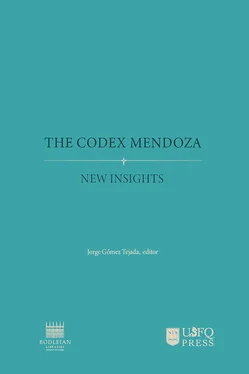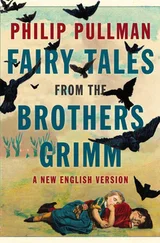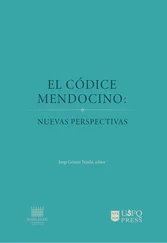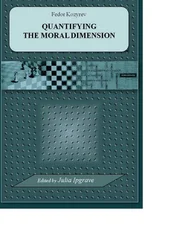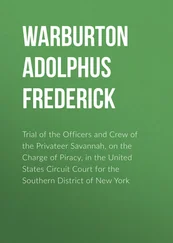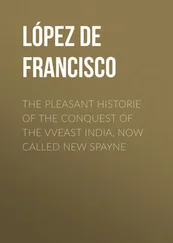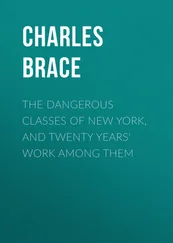We discovered a similar problem related to the usage of orangeish/brown ochers and iron-based pigments. Our analyses did not detect any usage of ochre in Central Mexican or pre-colonial Mixtec manuscripts. On the other hand, we know that ochers such as goethite were commonly used in pre-colonial Mexica mural painting (López Luján and Chiari 2012, 333). Thus, according to presently available data, the introduction of ochers onto the codex painters’ palette seems to be a Central Mexican colonial innovation. This adition broke those cultural norms that made the pre-colonial color palette of codex painters clearly distinguishable from that used in mural painting, which was almost completely devoid of any purely inorganic pigment. The growth of this trend is shown by the common usage of ochers and other inorganic pigments in manuscripts dated to the second half of the sixteenth century, such as Codex De La Cruz Badianus, Codex Florentinus, and the Beinecke Map as well as in various maps found in Relaciones geográficas (Haude 1998; Newman and Derrick 2012; Giorgi, Chelazzi, and Magaloni Kerpel 2014; Domenici et al. 2018; Zetina et al. 2011).
A specific goethite-based brown/orangeish pigment detected on the Codex Mendoza deserves further explanation. As mentioned above, this pigment contains arsenic, but it is difficult to say if this last element indicates the mixture of ochre with orpiment or if it was contained in the natural earth. Nevertheless, it is extremely interesting to note that a very similar, if not identical, material has been detected on the Beinecke Map, where it was interpreted by Magaloni Kerpel (2012, 87) as evidence of the use of orpiment. On the other hand, Newman and Derrick (2012, 97) apparently favored the idea that arsenic naturally occurs within the goethite.
The last innovative element is cinnabar. Despite being widely used in pre-Hispanic Mesoamerica for various purposes, according to our current data, this material was not used as a painting material on pre-colonial codices. On the other hand, cinnabar has been detected on colonial manuscripts such as the Beinecke Map, Codex Florentinus, and the Meztitlan Map (Haude 1998; Newman and Derrick 2012; Giorgi, Chelazzi, and Magaloni Kerpel 2014; Domenici, Miliani, and Sgamellotti 2019; Domenici et al. 2018). Interestingly enough, in these post-1560 manuscripts cinnabar was used as a painting material, while in the Codex Mendoza its usage was restricted to a written gloss. This limited usage suggests that it was a fairly recent introduction, still not accepted as a component of a proper pictorial palette, and confined to the realm of alphabetic writing shared with the European-introduced gall inks.
When paired with cultural and art historical analysis, the diverse implications of these elements can contribute to our understanding of how the Codex Mendoza was manufactured. First of all, the almost complete homogeneity of the palette in the three parts of the codex and the recurring variations in the patterns of color application strongly suggests that it was painted in a single workshop, probably by two or more painters following a working procedure of pre-colonial origin. These artists primarily painted in a traditional style using a mostly traditional palette, but also introduced a restricted set of new stylistic and technological traits.
It has been proposed that Mesoamerican painters may have selected their painting materials based on the symbolic attributes of the specific items they were depicting (e.g., Magaloni Kerpel 2011; 2012; 2014; Giorgi, Chelazzi, and Magaloni Kerpel 2014). Such an assertion does not seem to be fully confirmed by our analyses of pre-colonial manuscripts, given that a single painting material is often used all over a whole codex (especially in the case of black, red, and blue items) and variations in this pattern seem to depend more on chromatic rather than on material attributes of paints (as is the case of the yellow/orange/brown and green items). A similar pattern seems to characterize the Codex Mendoza; no clear usage of specific painting materials seems to be linked to the symbolic qualities of the depicted items and different depictions of the same item (e.g. a yellow shield) can be painted either with an organic or an inorganic color. Again, yellow and brownish colors show a higher compositional variance, while the same black, red, and blue painting materials are used all over the manuscript. Similarly, the purported symbolic pairing of local lamp black and non-local minium in two parallel glosses on folio 1v (Gómez Tejada 2012, 88–89) has been dismissed by our analyses, which showed that they were actually painted with gall ink and cinnabar. It is debatable whether cinnabar is traditional/non-traditional or local/non-local.
This said, we wish to clarify that we are not at all denying the fact that painting colors were imbued with deep symbolic significance derived from their materiality. But, in our opinion, this significance seems to be more generally linked to the brilliance of mostly organic painting materials used on pre-colonial codices. These materials were perceived as an aesthetic attribute expressing the “bursting” and “flowery” essence of manuscripts, which were intended to be chanted rather than read; thus, the manuscript pages were actual materializations of Mesoamerican “flowery speech” (Domenici 2016). This pattern seems to have been progressively broken during the early colonial times, when a host of local and foreign inorganic and more opaque pigments appeared on the codex painters’ palette, probably as a reflection of the changed context of production and performance of pictorial manuscripts increasingly manufactured and perceived as “books” in the European sense of the term (Domenici et al. 2018). With its still limited use of inorganic pigments and European-derived materials, the Codex Mendoza seems to stand at the very beginning of this process of early colonial material experimentation.
The rather limited set of colonial technological innovations identified on the Codex Mendoza leads us to the problem of the manuscript’s chronology, a topic that is also tackled on different basis and with different methodological approaches in other contributions in this book. As we saw, the Codex Mendoza palette seems to be more “innovative” than the one of the Codex Borbonicus, which was probably painted during the1530s; this assumption is based on the traditional dating of the Codex Mendoza to 1541-1542 (Robertson [1959] 1994, 87–90). On the other hand, the Codex Mendoza looks more technologically conservative than Codex De la Cruz Badianus, Beinecke Map, and Codex Florentinus. Despite some differences, the strong similarity between the palettes of Codex Mendoza and the Beinecke Map (arguably painted around 1565) is still noteworthy (Miller 2012, 3). Even if technological traits cannot be automatically taken as chronological indicators, our results suggest that the Codex Mendoza (more innovative than Codex Borbonicus and somewhat less innovative than the Beinecke Map) could have been painted somewhere between the 1530s and the 1560s. Within this rather ample time span, either the traditional dating of the manuscript to 1541-42 and the later date range of 1547-1552 convincingly proposed by Gómez Tejada (2012; see this volume too) would fit. In the absence of direct scientific dating of the actual manuscript, further specification cannot be achieved by means of purely technological comparisons between often loosely dated manuscripts. Thus, the task of more precisely dating Codex Mendoza should be more properly tackled by historical and art historical research.
Despite the inherent limitations of the analytical methods and strategies adopted in our analyses and of comparisons carried out among a sadly restricted corpus of extant manuscripts, these non-invasive scientific analyses allowed the first chemical characterization of Codex Mendoza’s palette. This is a wonderful snapshot of the early phases of the technological colonial encounter that took place in mid-sixteenth century Mexico.
Читать дальше
